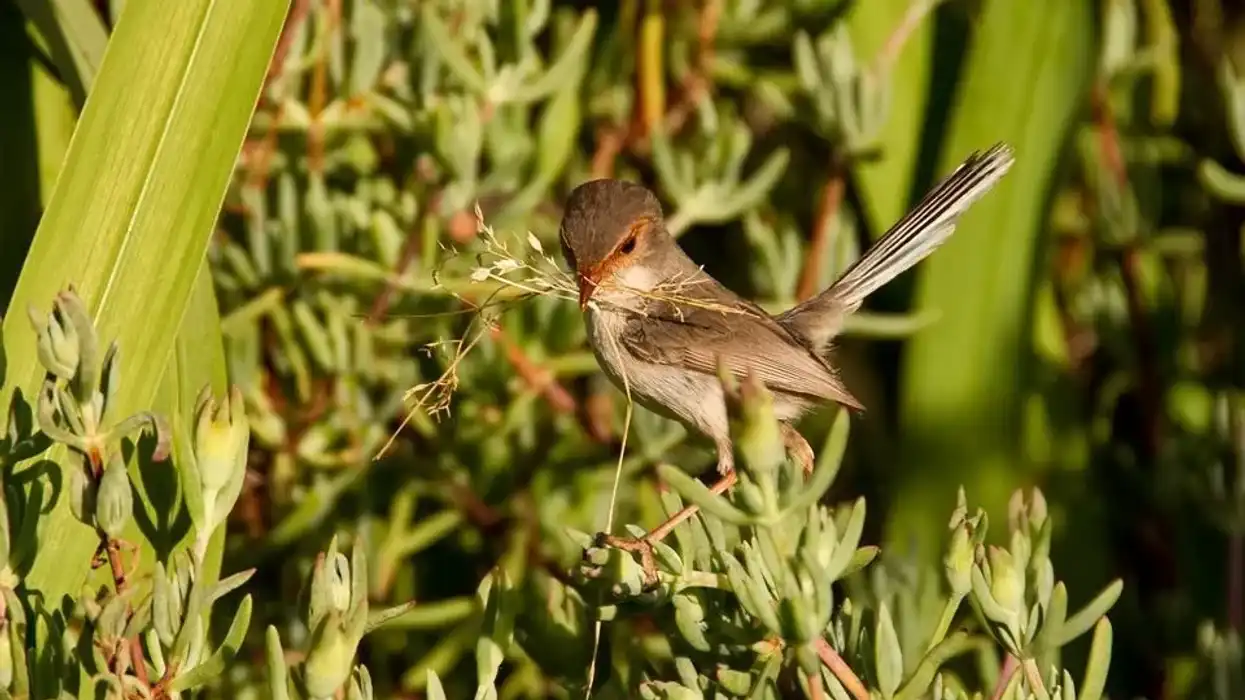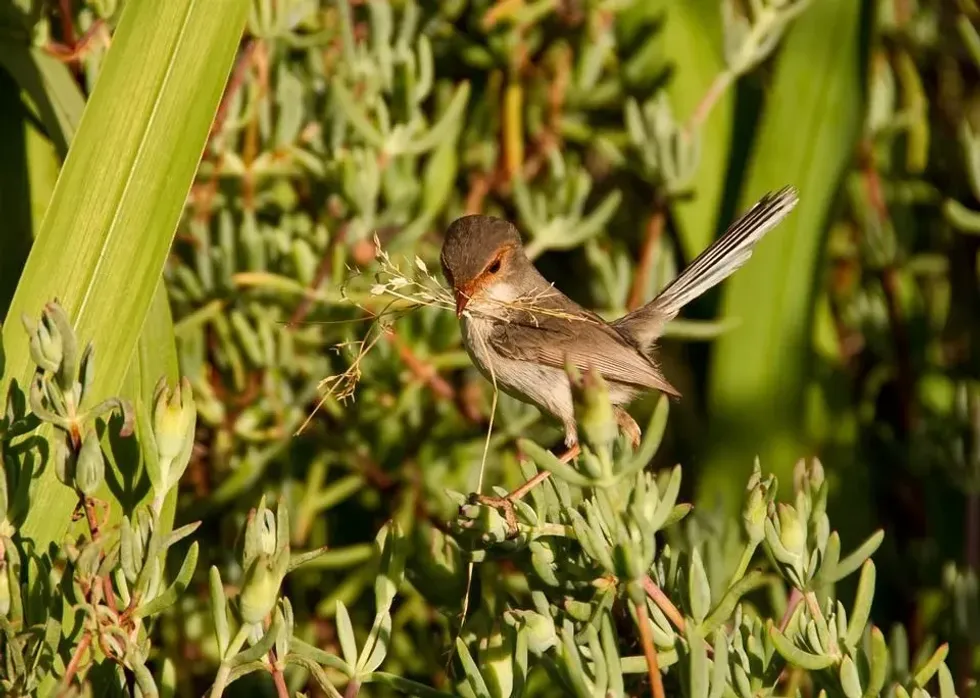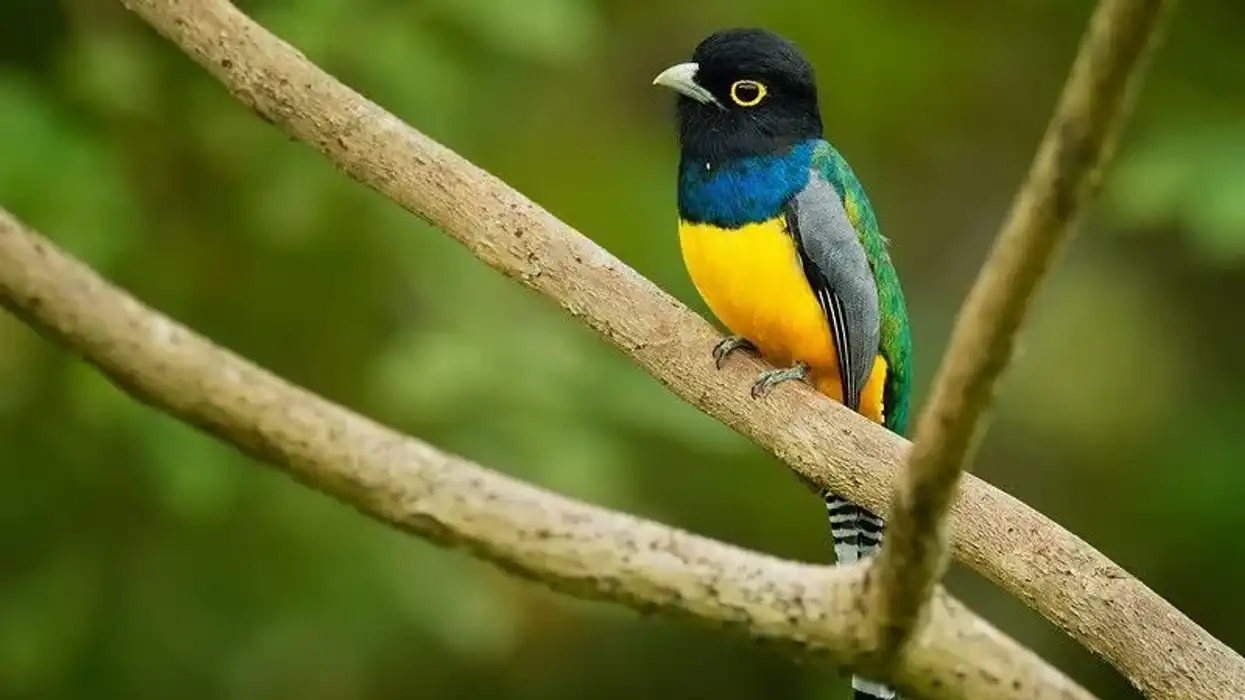The variegated fairy-wren, scientific name Malurus lamberti, is a bird species that is native to eastern Australia. The variegated fairy-wren is sexually dimorphic.
The male variegated fairy-wren has bright plumage of blue, black, brown, and white, while the females have gray or brown plumage. The variegated fairy-wren is a social being and is categorized among the breeding species of very cooperative birds.
These breeding species are medium in size and possess a strong sense of territoriality over the areas they inhabit.
Although these birds are monogamous, they are also helped by other birds to raise their young due to their social nature. The male variegated fairy-wren is also known to exhibit certain courtship behaviors towards females and is known to pluck the yellow petals to attract the females during the breeding season.
These are insectivorous on the basis of their diet, and they are often seen in the dense shrub areas situated in the eastern region of the Great Dividing Range. The nest of these birds is oval in shape.
Variegated Fairy-Wren Interesting Facts
What type of animal is a variegated fairy-wren?
The variegated fairy-wrens are small birds that are sexually dimorphic, and males have a beautiful blue-gray-colored crown on their heads. The variegated fairy-wrens are known to reside in New South Wales, Australia.
What class of animal does a variegated fairy-wren belong to?
The variegated fairy-wren, scientific name Malurus lamberti, belongs to the family of Maluridae. They belong to the genus Malurus and the class of Aves. They are from the order of Passeriformes and the phylum of Chordata. The variegated fairy-wren, Malurus lamberti, was first described by Vigors and Horsfield in 1827.
How many variegated fairy-wrens are there in the world?
The exact population of the variegated fairy-wren, Malurus lamberti, is unknown and not estimated at the global level.
Where does a variegated fairy-wren live?
Variegated fairy-wrens are native to Australia. The geographical location of these birds is also expanded in New South Wales and Western Australia. The male and female of the species can also be seen in the southeastern region of Queensland.
What is a variegated fairy-wren's habitat?
A variegated fairy-wren's main habitat is rainforests, but it can also be found in temperate scrublands and open forests, as well as tropical and subtropical forests and shrublands. The nest of these birds is oval in shape in the dense shrub vegetation.
Who do variegated fairy-wrens live with?
Fairy-wrens are very social birds, typically seen in groups. These groups can be either family groups with parents and they are young, or non-breeding flocks that consist of all adult members.
An adult male variegated fairy-wren will defend territories that have good resources for feeding nestlings. However, these territories are associated with the presence of females, not necessarily with other males.
How long does a variegated fairy-wren live?
It is unknown about the longevity of variegated fairy-wrens, in which the male is a blue color while females are brown. Generally, in the wild, variegated fairy-wrens are believed to have a maximum life span of about 15 years.
How do they reproduce?
Variegated fairy-wren has an interesting mating display called the zigzag dance and plucking of yellow petals. This behavior is observed in males of the species.
This dance is where they approach their potential partner, jump into the air with their legs straight out and then spring back down with their wings together and tail flattened. In the winter, they will have two to three broods with three to four eggs per brood.
However, in the summer, these species can have up to seven broods a year with three to four eggs in a clutch during the breeding season. Variegated fairy-wrens are known to have two main nests, one for breeding and one for shelter.
The nest is of the bird is oval in shape. The breeding season of these birds goes on throughout the year.
What is their conservation status?
Variegated fairy-wrens are small blue and brown birds that differ in both male and female species. The conservation status of these birds from Australia is of Least Concern.
Variegated Fairy-Wren Fun Facts
What do variegated fairy-wrens look like?
Variegated fairy-wren is a medium-sized bird, sometimes referred to as a wren, that has a blue and black body with a white chest. They can easily be identified by their physical descriptions.
Their tail is long and they have white patches on their wings. They have prominent red eyebrows and the sides of their face are black.
Males have a striking appearance because of their solid blue coloration on most of their bodies apart from their head which is colored in brownish-gray or black streaks.
They also have two striking blue ear patches and one patch is located behind each eye. Females lack this vibrant coloring and instead possess gray and brown spots and bars across their bodies while having a blue tail at the end.

How cute are they?
Variegated fairy-wrens are Australian songbirds that live in family groups and defend territories together. Like other fairy-wrens, they're known for cooperative and social breeding as older, experienced females help raise young by defending the territory and feeding chicks while the mother is busy laying eggs. These small brown birds are cute because of their social nature.
How do they communicate?
The most commonly heard noise made by variegated fairy-wren, Malurus lamberti species, is a song that sounds like 'chee-weee', with some variations. When disturbed, this species will make harsh scolding noises.
This is how variegated fairy-wren communicates when in their territory. However, they are known to mimic other birds (including the songs of other species) when in an area where other bird species live around them.
How big is a variegated fairy-wren?
The variegated fairy-wren is on average 5.5-6 in (14–15 cm) long.
How fast can a variegated fairy-wren fly?
The variegated fairy-wren's flying speed is unknown, and the male of the bird species has a blue crown.
How much does a variegated fairy-wren weigh?
The variegated fairy-wren is 0.21–0.39 oz (6–11 g) in weight.
What are the male and female names of the species?
The male and female of the species living in Australia are known by their common name and do not have any specific names.
What would you call a baby variegated fairy-wren?
The babies of variegated fairy-wrens are juveniles or hatchlings.
What do they eat?
Variegated fairy-wrens mainly feed on small invertebrates such as grasshoppers, ants, and spiders which they find by scratching at leaf litter or probing in tree bark. They also feed on a variety of fruits and seeds especially during winter when insects may not be easily available.
Are they dangerous?
No, these birds are not dangerous and no harm is evident to humans in Australia and nearby places. These birds are territorial and might not like any other bird species in their area.
Would they make a good pet?
Yes, because of their social nature, they would make decent pets, however, the male with a blue crown and the female with a brown crown are also territorial. So, regular interference might not be liked by the species.
Did You Know...
Splendid fairy-wrens are found throughout Australia and make decent pets. You will find splendid fairy-wrens in all habitats in Australia except for densely forested areas. Splendid fairy-wrens are common around urban areas, where they are frequently seen in backyards.
Splendid fairy-wrens are abundant across southern Australia, where they can be found in almost any habitat. Fairy-wrens are more likely to eat insects on the ground, but they will occasionally catch flying prey too. Variegated fairy-wrens never migrate and are also believed to be endemic to their native places.
Are there wrens in Australia?
Yes, absolutely, but they're not very well known for being fairy-wrens. They are from a different family!
The first type is the typical fairy-wren, Malurus cyaneus, which are found in Australia and New Guinea. The second type is the variegated fairy-wren, Malurus lamberti. Although these birds are still considered to be true fairy-wrens, they are from a different family, the Maluridae.
How many species of fairy-wren are there?
There are 12 species in the genus Malurus, and the family Maluridae has 28 species. Some of these species are the superb fairy-wren, white-winged fairy-wren, variegated fairy-wren, blue-breasted fairy-wren, splendid fairy-wren, broad-billed fairy-wren, red-winged fairy-wren, and yellow-faced fairy-wren.










